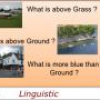413 search results - page 31 / 83 » IT alignment: what have we learned |
NIPS
2007
13 years 9 months ago
2007
Much of human knowledge is organized into sophisticated systems that are often called intuitive theories. We propose that intuitive theories are mentally represented in a logical ...
JSS
2007
13 years 7 months ago
2007
Large systems often have a long life-span and comprise many intricately related elements. The verification and maintenance of these systems require a good understanding of their ...
CVPR
2010
IEEE
14 years 4 months ago
2010
IEEE
We present an active learning framework to simultaneously learn appearance and contextual models for scene understanding tasks (multi-class classification). Existing multi-class a...
SAT
2009
Springer
14 years 2 months ago
2009
Springer
Abstract. We offer a new understanding of some aspects of practical SAT-solvers that are based on DPLL with unit-clause propagation, clause-learning, and restarts. On the theoreti...
AGILEDC
2006
IEEE
14 years 1 months ago
2006
IEEE
One of the core principles behind the Agile Manifesto is that of working at a sustainable pace over time. Having gone through the roller coaster of traditional software developmen...

